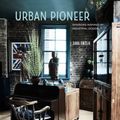
Urban Pioneer: Interiors Inspired by Industrial Design
Sara Emslie
More than half the world’s population now lives in cities as we flock to urban centres in search of jobs, easy commutes, cultural institutions and a thriving social life. The resulting pressures on housing mean that homeowners and renters are boldly converting ex-industrial and non-residential spaces into innovative contemporary homes. The conversion of such buildings into residential spaces first emerged in the 1960s and '70s. A decline in manufacturing in city centres meant that many warehouses and factories became vacant, attracting the first wave of urban pioneers – artists and creatives seeking cheap rents and large interiors to use as studio spaces. Since then, industrial areas in many cities have become sought-after residential districts and urban regeneration has gone from strength to strength. Nowadays the trend shows no sign of waning, with a second generation of urban pioneers cleverly converting former lofts, warehouses, schools, factories, offices and retail spaces into highly desirable homes full of personality and soul. In Urban Pioneer, Sara Emslie investigates the practic for transforming non-residential spaces into homes, the key elements of the look – from exposed brickwork to copper piping and metal roof trusses – and the related rise in the popularity of industrial design. She then explores twelve inspiring and varied real-life homes that showcase the very best of the Urban Pioneer look.
Booko found 2 book editions
Product filters
| Product |
Details
|
Price
|
New
|
Used
|
|---|---|---|---|---|
|
|
New: $63.06
Used: $41.44
|
New: $63.06
Used: $41.44
|
$63.06 | $41.44 |
|
|
New: Being refreshed...
Used: Being refreshed...
|
New: Being refreshed...
Used: Being refreshed...
|
Being refreshed... | Being refreshed... |
Booko collects this information from user contributions and sources on the internet - it is not a definitive list of editions. Search Booko for other editions of Urban Pioneer: Interiors Inspired by Industrial Design.





















